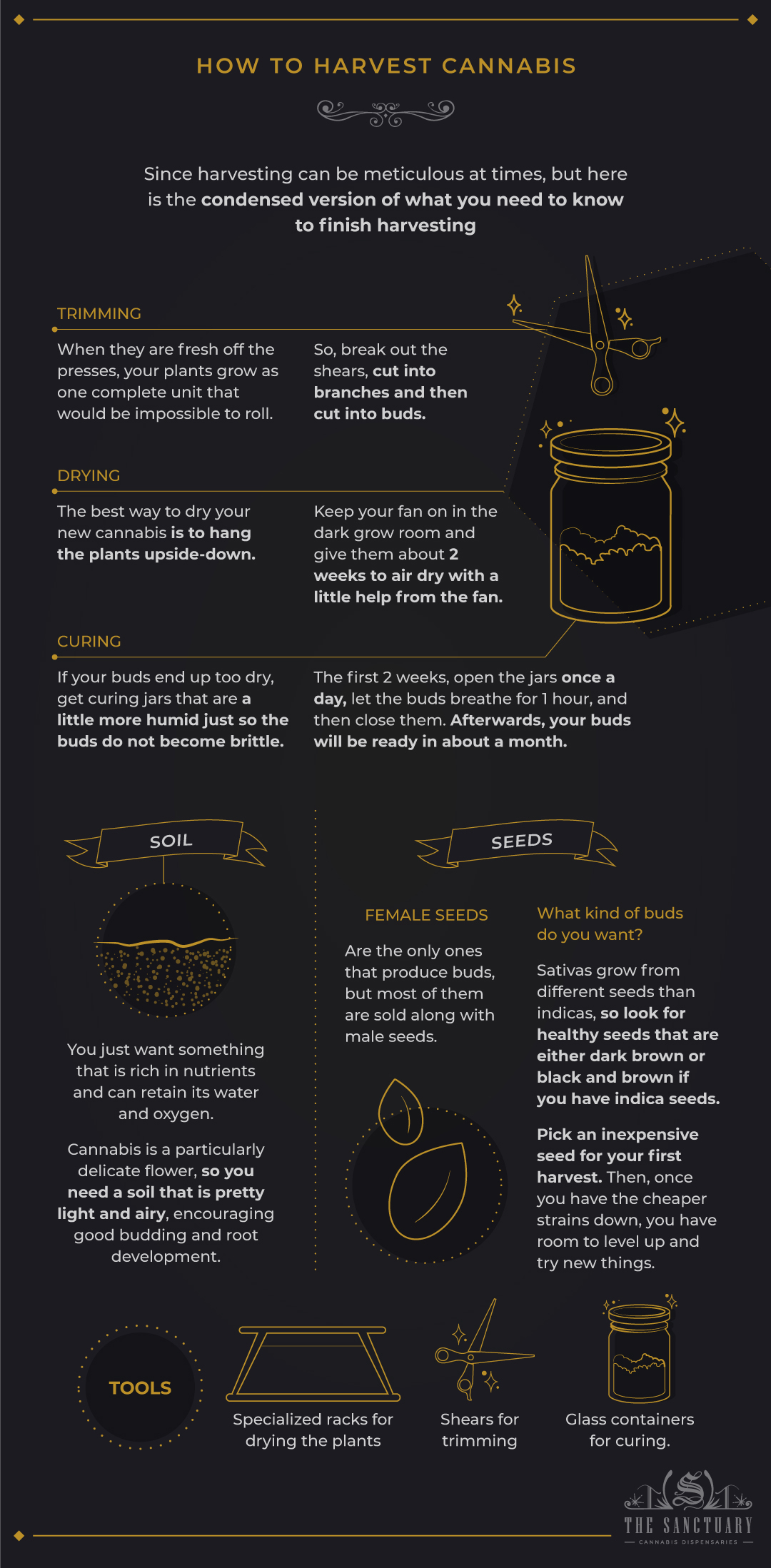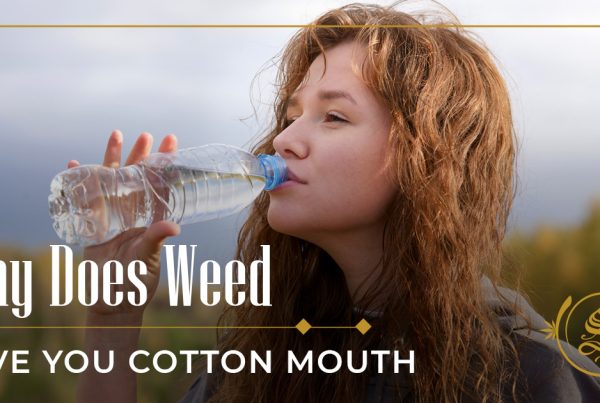Not long after that first trip to the dispensary do the most passionate consumers feel the need to create and harvest their own cannabis. But are you able to do this out of your own home? Can you do this without a huge, expensive greenhouse or cultivator? Yes and yes.
Things like greenhouses are perfect for outdoor harvesting, but if you are in an apartment complex and do not have the yard space, indoor harvesting is even easier and can be done pretty much anywhere. The indoor rigs that you already set up for growing help a bunch, and harvesting your new buds will teach you trimming, drying and curing: All of which you need to really get a grasp on to harvest the perfect cannabis.
Why Harvest Cannabis?
Well, there are a few reasons: One is to learn gardening and caring for plants, another is to grow the perfect strain of your creation. You will always have great options at the dispensary, but imagine a strain grown from your own soil, the seed(s) of your choice and grown in a climate and humidity that is completely unique to your setup. Sounds awesome, right?
Another reason is harvesting is a good skill to learn to not only make productive use of your time, but as a good backup re-up plan, should your dispensary be closed or temporarily out of the question. The first buds you ever grow and harvest might not be an overnight success, but everything you learn from that first try will set you up for success in harvesting.
How do I start?
To start harvesting, the first thing you should probably do is grow some cannabis: this might be important. But before that, a quick Google search will answer if it is even legal to grow cannabis in your area (it probably is if you have read this far, but you never know). No pressure if this is your first time growing, that indoor grow kit will be your best friend along the way and make the process faster and simpler.
Growing cannabis outdoors is almost a year-long job (8 months at the most) but an indoor kit or grow room where you control the plant’s environment instead of the weather? That will cut down the process to just a couple of weeks. As long as you keep the little buds hydrated, under the grow light when they need and out of the light when they need to cool, this will all run smoothly.
How to Harvest Cannabis

Earlier, we mentioned the other three steps you will learn by harvesting cannabis. Getting these under your fingers will have you producing the best buds you will find outside of the dispensary. Each one could potentially be its own book, since harvesting can be meticulous at times, but here is the condensed version of what you need to know to finish harvesting:
- Trimming – When they are fresh off the presses, your plants grow as one complete unit that would be impossible to roll. So, break out the shears, cut into branches and then cut into buds. You will know if they are ready to trim when the trichomes are a milky clear.
- Drying – The easiest, and probably best, way to dry your new cannabis is to hang the plants upside-down, keep your fan on in the dark grow room and give them about 2 weeks to air dry with a little help from the fan.
- Curing – If your buds end up too dry, you may need to procure some curing jars that are a little more humid just so the buds do not become brittle.The initial 2-week stage is when you want to open the jars once a day, let the buds breathe for an hour, and then close them back up. Afterwards, your buds will be ready in about a month.
Taking a small step back, you also need to plant the seed of this mission: literally and metaphorically. Find the right seeds and the right soil, care for your budding plants with all the necessary tools, and more than half of your work is already done.
Soil
Choosing the best soil for your cannabis is not at all different than choosing it for regular plants: You just want something that is rich in nutrients and can retain its water and oxygen.
The only real difference is that cannabis is a particularly delicate flower, so you need a soil that is pretty light and airy, encouraging good budding and root development.
Seeds
With all this talk of buds, this is where you would want to look at female seeds: Only female seeds can produce buds, which might be a roadblock in buying seeds since most of them are sold along with male seeds.
From there, the seeds come down to what kind of buds you want: sativas grow from different seeds than indicas, but the golden rule is to look for healthy seeds that are either dark brown or black and brown if you have indica seeds. The other golden rule is to pick an inexpensive seed for your first harvest, just so do not break the bank if it goes horribly, horribly wrong. Then, once you have the cheaper strains down, you have room to level up and try new things.
Tools
Nothing more than a few specialized racks for drying the plants, a pair of shears for trimming and some reliable glass containers for curing are pretty much all the tools you need to get started on your first harvest. Do not go out and buy overly expensive devices that you do not know how to use (‘Expensive’ does not always mean ‘good’), just get the basic tools that you would normally use for gardening and science do the heavy lifting.
The Best Time to Harvest?
The right conditions and temperatures are crucial just like any other form of harvesting. If you live in the Sanctuary’s locale of Las Vegas or anywhere with similar dry heat, you need to harvest early in the morning. Us adults are busy, we can forget to water the plants here and there, so that combined with a sweltering afternoon will mark your plant’s last day on Earth.
But have no fear: A consistent watering schedule that you can stick to, or your housemates can stick to if you are not at home, with ideal growing conditions and a seasonal advantage will keep your buds from an early grave. That advantage comes from harvesting in the springtime.






